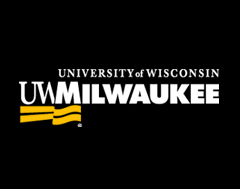Regeneration of Engineered Filtration Material and Recovery of Phosphorous from Agricultural Runoff
Mentor 1
Marcia Silva
Start Date
16-4-2021 12:00 AM
Description
Nathanael E. Sovitzky and Marcia R. Silva Water Technology Accelerator, 247 W. Freshwater Way, Milwaukee, WI Because the absorption of phosphate by plants is critical for their growth, farmers heavily fertilize their fields with it. However, if excess phosphorous from farmlands runs off of into the environment, it could lead to an imbalance of the phosphorous cycle, causing eutrophication, which causes algal blooms endangering the ecosystem. Methods of removal of phosphorous from the water include the enhanced biological phosphorous removal, or physical-chemical based adsorption methods. Biological removal methods exclude the possibility of phosphorous regeneration, whereas adsorption-based methods can allow for the regeneration of the removed phosphorous. Our lab has developed a technology based on engineered porous material for removal of P from agricultural runoff. This study will focus on the evaluation of two methods for regeneration of the adsorbent and recovery of P.
Regeneration of Engineered Filtration Material and Recovery of Phosphorous from Agricultural Runoff
Nathanael E. Sovitzky and Marcia R. Silva Water Technology Accelerator, 247 W. Freshwater Way, Milwaukee, WI Because the absorption of phosphate by plants is critical for their growth, farmers heavily fertilize their fields with it. However, if excess phosphorous from farmlands runs off of into the environment, it could lead to an imbalance of the phosphorous cycle, causing eutrophication, which causes algal blooms endangering the ecosystem. Methods of removal of phosphorous from the water include the enhanced biological phosphorous removal, or physical-chemical based adsorption methods. Biological removal methods exclude the possibility of phosphorous regeneration, whereas adsorption-based methods can allow for the regeneration of the removed phosphorous. Our lab has developed a technology based on engineered porous material for removal of P from agricultural runoff. This study will focus on the evaluation of two methods for regeneration of the adsorbent and recovery of P.


